S'sonic
Stealth
Menu
A free template by Lucknowwebs.com for WYSIWYG WebBuilder 8
Powered by Sispro1-S
Nigel G Wilcox
Paragon Of Space Publication
© Copyright Reserved - United Kingdom
Ideal Screen Composition 1024 x 768
SITEMAP
PSEUDO SCIENCE
SCIENCE RESEARCH
ABOUT
Desk
Supersonic
Stealth
Study
Menu
MAIN INDEX
Fastest Air Planes
Space
Transport
Menu
http://military.wikia.com/wiki/SEPECAT_Jaguar?file=Cockpit_of_Jaguar_GR.3A.jpg
C-5 Galaxy
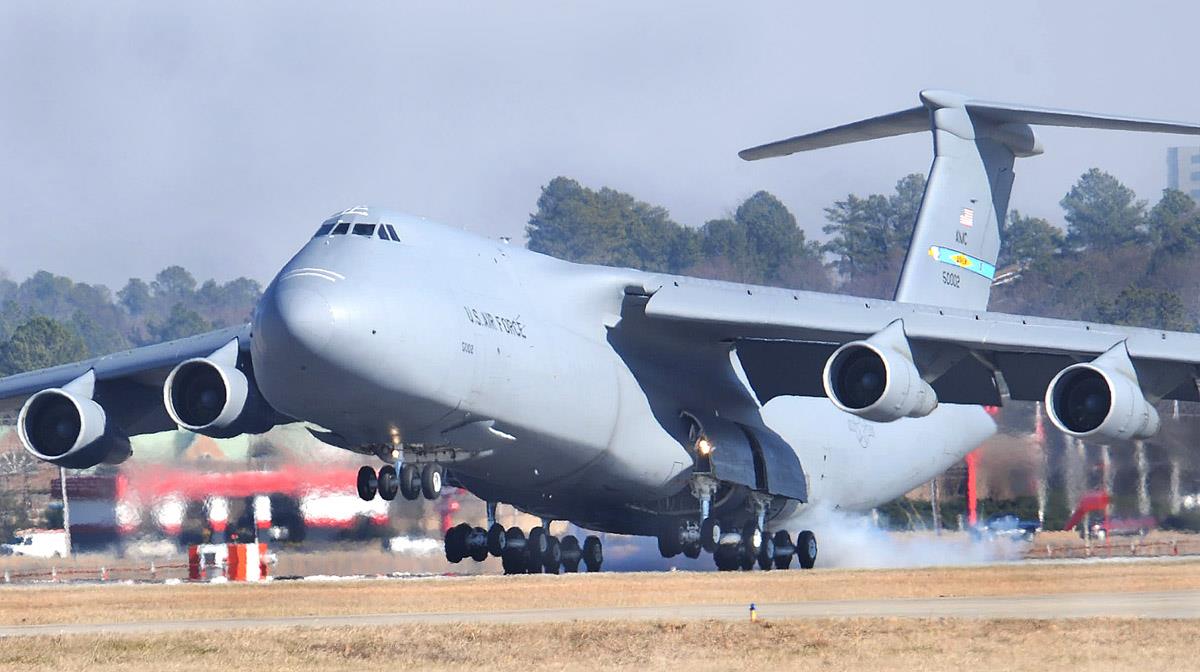
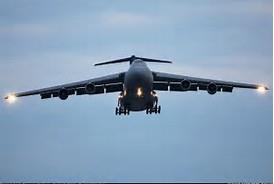

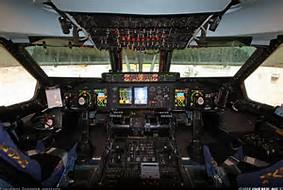
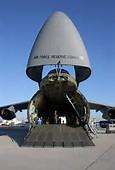
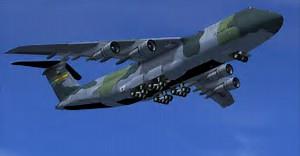
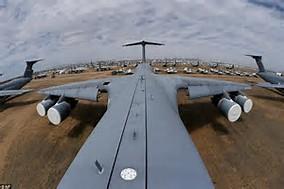
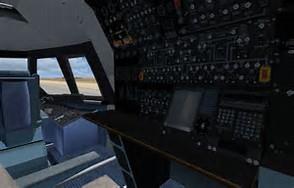
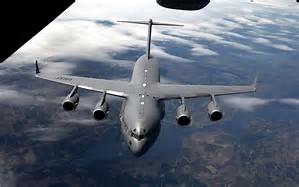
General characteristics
Crew: 7 typical (aircraft commander, pilot, two flight engineers, three loadmasters)
4 minimum (pilot, copilot, two flight engineers)
Payload: 270,000 lb (122,470 kg)
Length: 247 ft 1 in (75.31 m)
Wingspan: 222 ft 9 in (67.89 m)
Height: 65 ft 1 in (19.84 m)
Wing area: 6,200 ft2 (576 m2)
Empty weight: 380,000 lb (172,371 kg)
Useful load: 389,000 lb (176,450 kg)
Loaded weight: 769,000 lb (348,800 kg)
Max. takeoff weight: 840,000 lb (381,000 kg)
Powerplant: 4 × General Electric TF39-GE-1C high-bypass turbofan, 43,000 lbf (190 kN) each
Performance
Maximum speed: Mach 0.79 (462 kn, 531 mph, 855 km/h)
Cruise speed: Mach 0.77 (450 kn, 518 mph, 833 km/h)
Range: 2,400 nmi (2,760 mi, 4,440 km) with a 263,200 lb (119,400 kg) payload
Service ceiling: 35,700 ft (10,600 m) at 615,000 lb (279,000 kg) gross weight
Rate of climb: 1,800 ft/min (9.14 m/s)
Wing loading: 120 lb/ft2 (610 kg/m2)
Thrust/weight: 0.22
Takeoff roll: 8,400 ft (2,600 m)
Landing roll: 3,600 ft (1,100 m)
Fuel capacity: 51,150 US gal (193,600 L)
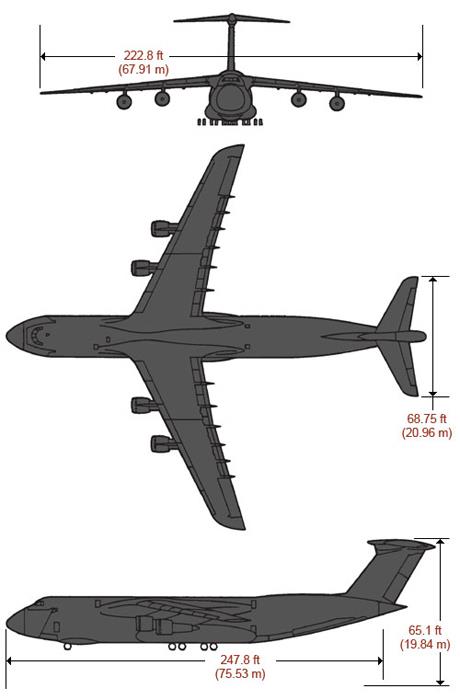
The Lockheed C-5 Galaxy is a large military transport aircraft originally designed and built by Lockheed, and now maintained and upgraded by its successor, Lockheed Martin. It provides the United States Air Force with a heavy intercontinental-range strategic airlift capability, one that can carry outsize and oversize loads, including all air-certifiable cargo. The Galaxy has many similarities to its smaller Lockheed C-141 Starlifter predecessor, and the later Boeing C-17 Globemaster III. The C-5 is among the largest military aircraft in the world.
Maiden flight: 30 Jun 1968 Length: 247.08 ft Introduced: Jun 1970 Engine type: General Electric TF39 Manufacturers: Lockheed Corporation · Lockheed Martin
The C-5 is a large high-wing cargo aircraft with a distinctive high T-tail fin (vertical) stabilizer, and with four TF39 turbofan engines mounted on pylons beneath wings that are swept 25 degrees. Similar in layout to its smaller predecessor, the C-141 Starlifter, the C-5 has 12 internal wing tanks and is equipped for aerial refueling. Above the plane-length cargo deck, it provides an upper deck for flight operations and for seating 75 passengers including the embarked loadmaster crew, all who face to the rear of the aircraft during flight. Full-open(able) bay doors at both nose and tail enable "drive-through" loading and unloading of cargo.
The cargo hold of the C-5 is one foot longer than the entire length of the first powered flight by the Wright Brothers at Kitty Hawk. For its voracious consumption of fuel and its maintenance and reliability issues the Galaxy's aircrews have nicknamed it FRED, for: Fucking Ridiculous, Economic/Environmental Disaster.
Takeoff and landing distance requirements for the plane at maximum-load gross weight are 8,300 ft (2,500 m) and 4,900 ft (1,500 m), respectively. Its high flotation main landing gear provides 28 wheels to distribute gross weight on paved or earth surfaces. The rear main landing gear can be made to caster to make a smaller turning radius, and rotates 90 degrees after takeoff before being retracted. "Kneeling" landing gear permits lowering the aircraft when parked, thereby presenting the cargo deck at truck-bed height to facilitate loading and unloading operations.
The C-5 features a Malfunction Detection Analysis and Recording (MADAR) system to identify errors throughout the aircraft.
The cargo compartment is 121 ft (37 m) long, 13.5 ft (4.1 m) high, and 19 ft (5.8 m) wide, or just over 31,000 cu ft (880 m3). It can accommodate up to 36 463L master pallets or a mix of palletized cargo and vehicles. The nose and aft cargo-bay doors open the full width and height of the cargo bay to maximize efficient loading of oversized equipment. Full width ramps enable loading double rows of vehicles from either end of the cargo hold.
The Galaxy C-5 is capable of moving nearly every type of military combat equipment, including such bulky items as the Army armored vehicle launched bridge (AVLB), at 74 short tons (67 t), from the United States to any location on the globe;[49] and of accommodating up to six Boeing AH-64 Apache helicopters or five Bradley Fighting Vehicles at one time.
Role: Strategic airlifter
National origin: United States
Manufacturer: Lockheed Corporation
Lockheed Martin
First flight: 30 June 1968
Introduction: June 1970
Status: In service
Primary user: United States Air Force
Produced: C-5A: 1968-1973
C-5B: 1985-1989
Number built: 131 (C-5A: 81, C-5B: 50)
Unit cost: C-5A: US$224.29 million (2016)
C-5B: US$262.75 million (2016)
C-5C: US$129.17 million (2016)
C-5M: US$100.37 million (2016)













